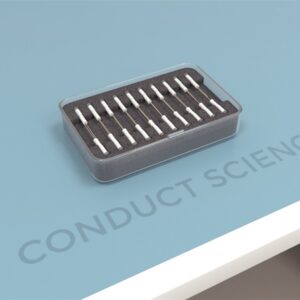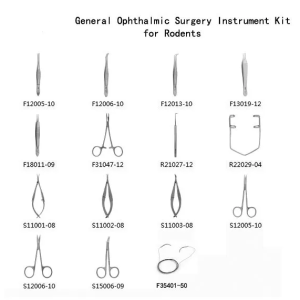$990.00
The Ant Double Y-maze consists of a Y-shaped structure branching into two additional Y-shaped arms. It is designed to investigate decision-making processes and lateralized behaviors in ants.
This maze is an adaptation of the conventional Y-maze used in rodent studies, employing a similar decision-making protocol.
Featuring a single longitudinal entrance channel, the maze includes two symmetrical branching cavities perpendicular to each other. Each branch is equipped with a Y-shaped structure, providing a total of four goal arms for experimental tasks.
Mazeengineers provides the Ant Double Y-Maze for research purposes.

MazeEngineers offers custom-built behavioral mazes at no extra cost—designed to fit your exact research needs. Eliminate reproducibility issues from poor sizing or lingering scent cues with precision-engineered, modular, and smart mazes that adapt in real time to animal behavior. Publish new protocols, run adaptive experiments, and push the boundaries of behavioral science.



Features |
Length of maze arms: 10mm |
Width of maze arms: 2mm |
Diameter of petri dishes: 230 x 230 x 19mm |

The Ant Double Y-maze serves as a tool for studying decision-making and lateralized behaviors in ants. It features a Y-shaped structure that branches into two additional Y-shaped arms. This maze is adapted from the standard Y-maze used in rodent studies, employing a similar decision-making protocol.
Animals rely on sensory organs to gather information about their environment. These sensory organs are integral to the nervous system, and further investigations explore how asymmetries in the left and right sides of the nervous system influence animal behaviors (Frasnelli, Vallortigara, & Rogers, 2014). The Ant Double Y-maze allows researchers to observe how ants exhibit biased choices towards either the left or right maze arm, offering insights into behaviors linked to their lateralized nervous systems. This maze is valuable for studying decision-making behaviors in ants related to mating, foraging, and shelter-seeking under various experimental protocols. Moreover, it facilitates the evaluation of how diseases, nervous system disorders, brain lesions, and pharmacological interventions affect learning, foraging, and mating behaviors.
Other apparatuses used for assessing ant behaviors include the Ant Binary Tree Maze, the Ant T-Maze, the Ant Double Bifurcation T-Maze, and the Ant Colony Maze.
The Ant Double Y-maze is positioned within a 50 mm x 75 mm x 1.8 mm framework. This maze features a single longitudinal entrance channel and two symmetrical branching cavities arranged perpendicular to each other. Each branch is outfitted with a Y-Maze structure, providing a total of four goal arms. Each arm of the maze measures 10 mm in length and 2 mm in width. Additionally, the apparatus includes large Petri dishes (230 x 230 x 19 mm) placed at the terminus of the four branches to accommodate stimuli.
Wash the perimeter with water after every trial. Appropriately light the maze. A tracking and recording system such as the Noldus Ethovision XT can be used to assist with observations.
The following parameters can be observed on an Ant Double Y-maze:
There are no questions yet. Be the first to ask a question about this product.
Monday – Friday
9 AM – 5 PM EST
DISCLAIMER: ConductScience and affiliate products are NOT designed for human consumption, testing, or clinical utilization. They are designed for pre-clinical utilization only. Customers purchasing apparatus for the purposes of scientific research or veterinary care affirm adherence to applicable regulatory bodies for the country in which their research or care is conducted.